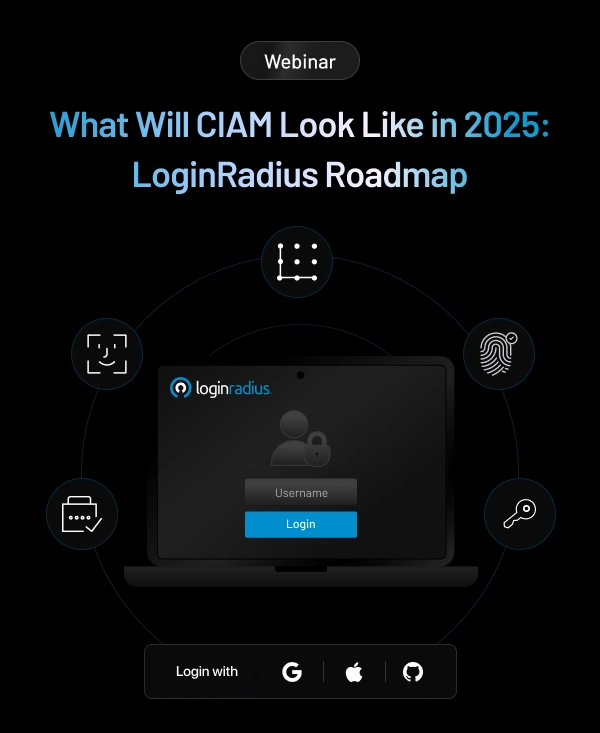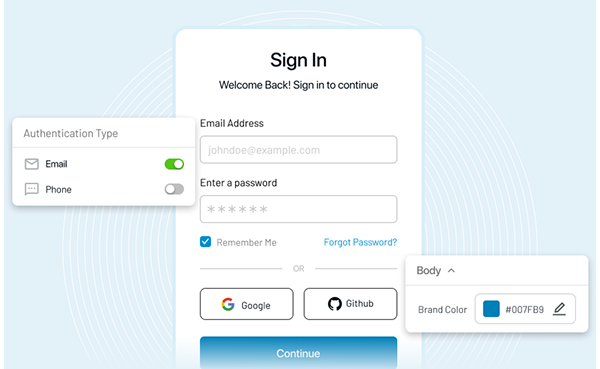Leaving your employees defenseless during remote work can make your business vulnerable to potential risks. The internet poses numerous threats for remote workers. They can easily fall prey to hackers, scammers, and fraudsters. You can protect them by implementing remote work security best practices in your digital workplace, such as identity management, for instance.
According to Statista, business spending for identity management systems will reach $13.92 billion by the end of 2021. This is an organizational process that ensures individuals have appropriate access to tools and resources to do their jobs. It associates user rights and restrictions with established identities. This way, only authenticated users can access specific data and applications within your organization. Hence, many businesses consider identity management an essential tool for security.
With that, here are some of the best practices to ensure cybersecurity for remote workers using identity management.
1. Choose the right software
Nowadays, there are numerous identity access management tools to choose from. All of which offer different sets of features and functions to secure your business from potential threats. And while there is no such thing as a “correct” software, make sure to choose the right one for your business. Start by determining what your organization’s specific needs to tighten security are. Ask questions such as:
- How many employees work remotely?
- What type of applications do they use?
- What data do they have authorized access to?
- How secure is your IT infrastructure?
- What security compliances do you have to consider?
After answering these questions, you can determine the features and functions you need for your identity management software. As a result, you can narrow down the list of software to choose from, making it easier to compare and contrast solutions.
2. Develop a zero-trust approach
Zero trust refers to a network of security models that believe both users and applications shouldn’t be trusted. It requires mandatory verification, both inside and outside your network, to be able to access data and resources from your system. This ensures data security for remote workers who use multiple devices and applications outside your networks.
Businesses should be wary of everything on the internet. In fact, even on-premises or offline applications can be breached by hackers, scammers, and fraudsters. You need to start living and breathing zero-trust philosophy by continuously authenticating identities and user access.
Consider adopting this approach into your remote work policies and protocols so your remote employees will be guided accordingly. One great example would be implementing multi-factor authentication for each login. This will add an extra layer of protection and verification for your users.
3. Perform routine review of accounts
A common practice among businesses is encouraging their employees to update and change their passwords and account details periodically. This way, your database remains updated. Likewise, frequent password changes can minimize potential risks of password breaches.
With that, it only follows that you perform a routine review of all the accounts you manage in your identity management system. This is where you constantly authenticate and validate the identities of your users and monitor the security of your database. Consider implementing user authentication in a Python application to help cover all bases during the process.
You should also watch out for orphan accounts in your system. Whenever a user moves to a different company, you need to make sure that their accounts are properly off-boarded from your network. Orphaned accounts are often goldmines for hackers where they can gather credentials and identities to breach and attack your business. Hence, you must remove all orphaned accounts from your system.
4. Centralize data and identities
Create a robust identity management system by centralizing the data you collect from your users. Having data silos can make it harder to keep track of all the credentials and information about your remote workers. As a result, this makes your system more vulnerable to data leaks and breaches. By creating a single location for user profiles, you can secure and monitor user authentication and access.
Proper data management often requires two things—a reliable software or system to store the data in and an expert or group of experts to maintain the database. This makes Management Information Systems (MIS) one of the highest paying majors nowadays as more businesses focus on strengthening their IT infrastructures and security. With their background and expertise, they ensure that your databases are secured and well-maintained.
5. Consider single sign-on authentication
For businesses that require their remote employees to use several applications at once, you need to be aware of the various hazards it can bring. For one, your remote employees need to remember the details of all their accounts such as passwords, email addresses, and more. This can be frustrating for others and might even lead to some security issues in the process. It can result in some forgetting their own credentials. Worse, others might end up writing or typing it down, leaving their account details vulnerable.
Allow your workers to bring their own identity in various employee applications through single sign-on (SSO) authentication. Through SSO, your remote employees can access any of your web properties, mobile apps, and third-party systems with a single identity, streamlining their logins each time they go to work.
6. Go passwordless
Forgetting passwords is a common issue for many users. This is especially true nowadays since almost everyone juggles several accounts all at once—both for personal and work-related reasons. Worse, around 32% of users still manually enter their passwords for every account they have. This can pose potential security risks for your remote employees and your business if left ignored.
Consider going passwordless with your employees’ logins for various business applications. Instead, opt to add a magic link feature to your mobile apps or email accounts, making it easier and more secure for users to sign in. You will simply send the link through your users’ respective email. By clicking on it, they will directly be logged in to their accounts. This process is almost like when you receive a one-time-password (OTP), but this time, you won’t have to enter any code or pin to get into your account. This helps prevent password-based attacks on your remote employees’ accounts.
7. Integrate with other solutions
One of the common remote access security best practices among businesses is integration. By connecting your identity management system to your other business solutions, you can easily sync your data across all your applications. This includes your remote workers details and login credentials.
A great example is LoginRadius. You can integrate it with any software that has an API. This streamlines real-time data flow and dismantles data silos within your systems. You can configure and monitor your integrations through their turnkey connections from their admin console.
Conclusion
As your business migrates to a virtual workplace, you must learn how to maintain security when employees work remotely. Leaving them defenseless is also tantamount to making your organization vulnerable to potential risks. Protect your business by leveraging identity management.
Through identity management, you reduce password issues and enhance security for your remote teams. It streamlines the process of logging in, authenticating, and authorizing access to your organization’s data and resources. To find out more about the benefits of identity management, contact our team.
















